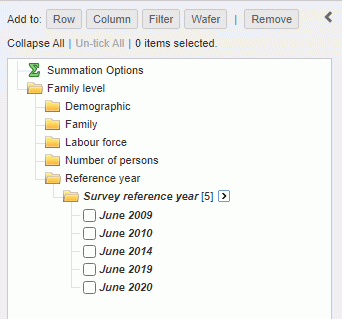24/10/2023
- Release of Labour Force Status of Families microdata in DataLab for June 2023.
- Addition of the latest data for June 2023
- Revised data from June 2017 to June 2022 due to rebenchmarking to the latest person and household level estimates resulting from the 2021 Census of Population and Housing.
- The temporary introduction of data on a quarterly frequency between Mar 2019 and June 2022 due to the COVID-19 pandemic was not continued through to June 2023.
- TableBuilder release of June 2022 and June 2023 Families data is delayed until next year due to ongoing delays while the ABS upgrades the infrastructure behind TableBuilder to support the load from the 2021 Census.
18/10/2022
- Release of Labour Force Status of Families microdata in DataLab for the first time as a supplementary file for the Longitudinal Labour Force (LLFS) microdata. This file features data complied annually for the months June 2005 to June 2022, as well as quarterly data for the months March, September and December between March 2019 and June 2022.
- TableBuilder release of June 2022 Families data is delayed until later in the year in order to accommodate the release of 2021 Census data in TableBuilder.
12/10/2021
TableBuilder updates for June 2021 release
- Addition of the latest data from June 2021
- Addition of June data for 2011 to 2013 and 2015 to 2018, which were previously unavailable
- Addition of quarterly data from March 2019 to June 2021 (March, June, September and December)
- Addition of new data item "Age of youngest dependant - OECD age groups" to aid in international comparisons


